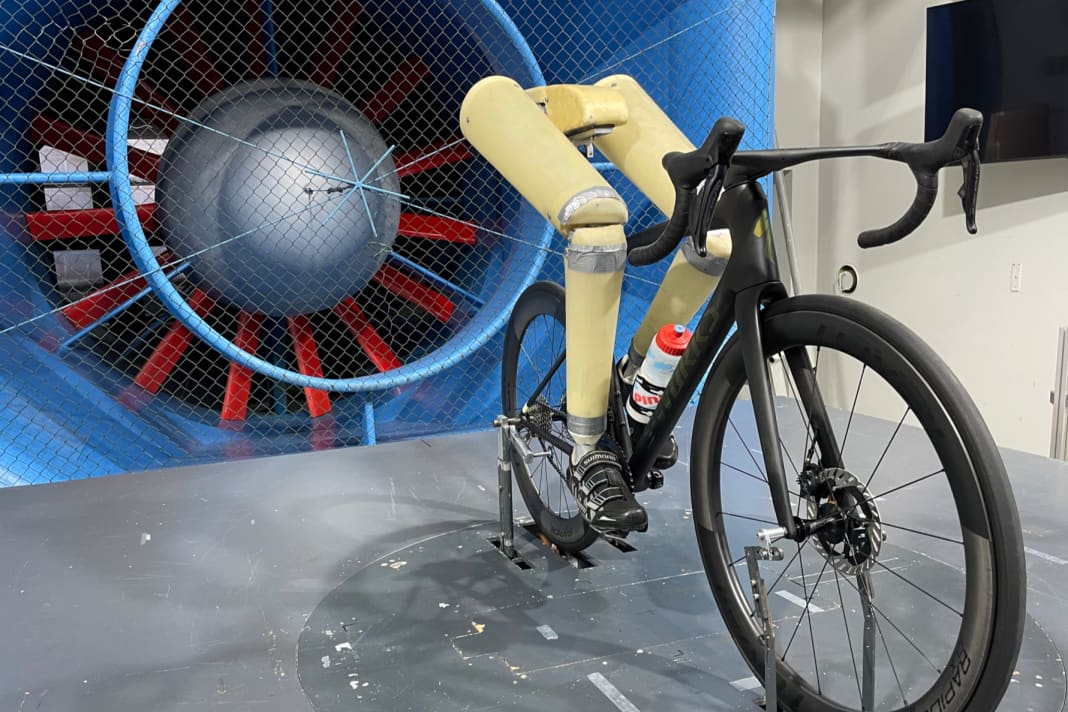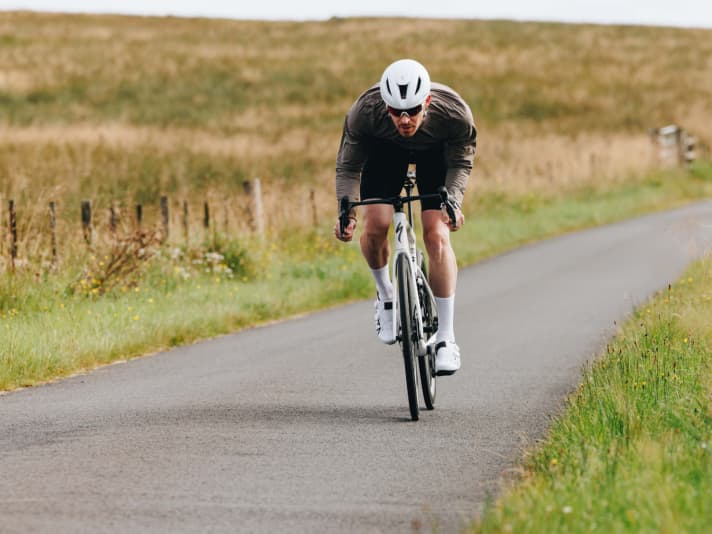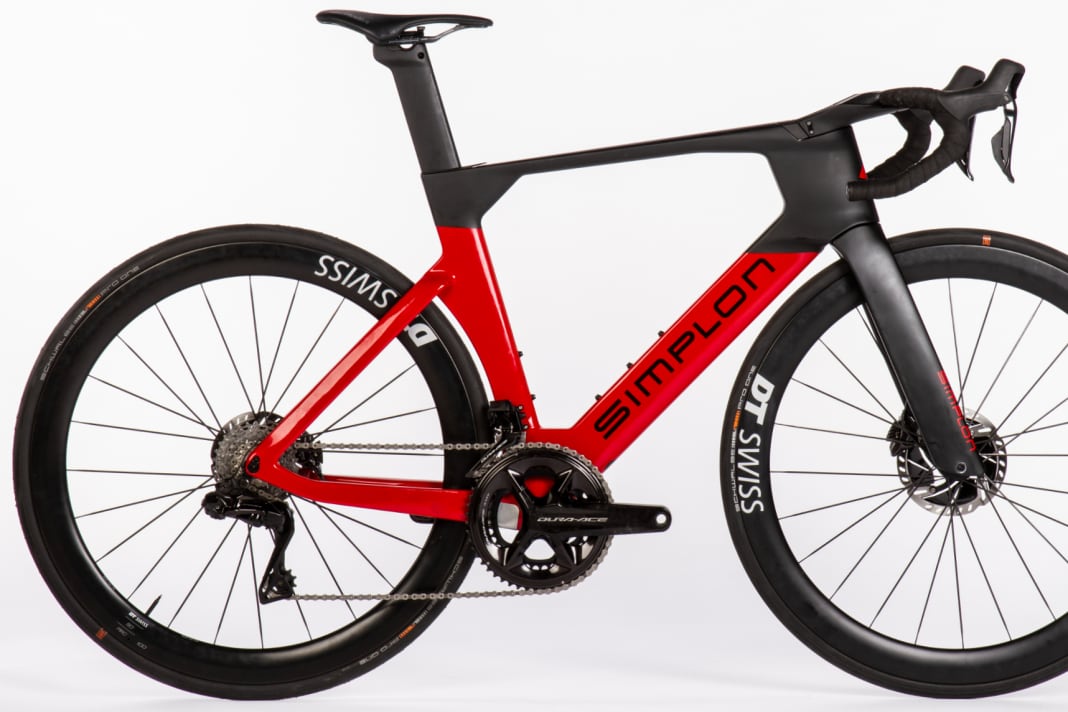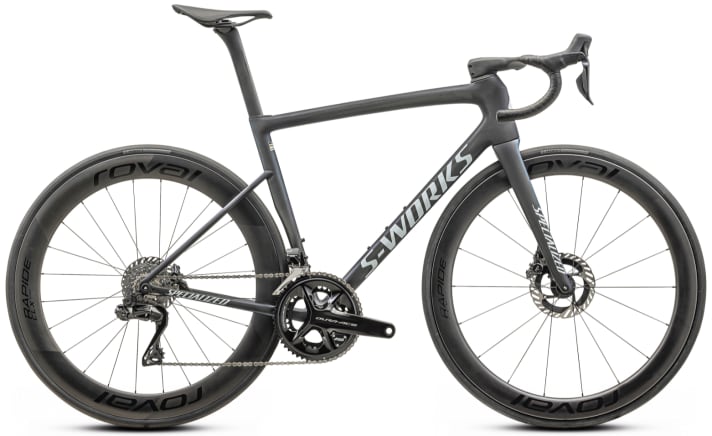Best road bike in the world: Specialized Tarmac achieves new TOUR top rating
Julian Schultz
· 20.10.2023






So far, four competition models have topped the list of the best racing bikes in the world. The Canyon Aeroad, Giant Propel, Scott Foil and Specialized Tarmac SL7 earned the top rating in TOUR by top performance in the four most important criteria. The 1.4 seemed carved in stone, with the symbiosis of aerodynamics, weight, comfort, and stiffness hardly able to be improved upon. But with a great piece of engineering, Specialized is now setting a new benchmark - and giving an insight into the direction that competition bikes are likely to develop.
Tarmac SL8: Perfect symbiosis

Making one of the already best racing bikes in the world even better: That was the challenge faced by Specialized and their chief engineer, Peter Denk. And they stayed true to their philosophy. The SL8 remains, among competition all-rounders, the bike that shows no weaknesses in its exclusive S-Works version. Already during the first test ride on the sidelines of the World Championships in Glasgow, this bike hinted at its potential. The measurements from TOUR’s lab and GST-Wind Tunnel confirmed this riding experience. The bike impresses above all with the perfect interplay of its characteristics.
With its low weight of 6550 grams, the Tarmac accelerates like a bullet and effortlessly sprints up climbs. The exceptionally rigid frame set and the sporty, stretched riding position emphasize the character of this thoroughbred racer. Unlike our test bike in Glasgow, which was equipped with a 3D-printed saddle, the reviewed version comes with a conventional carbon saddle, which is slightly less comfortable. Overall, the SL8 provides a high level of comfort for a competition bike.

In the GST-Wind Tunnel in Immenstaad, the Specialized bike finally eliminated all doubts: with 209 watts of pedalling power to overcome drag at 45 km/h, the new model is only minimally faster than the SL7 (210 watts). In addition, there are competitors with better aerodynamics or more comfort. However, as an overall concept, no racing bike currently performs better.
The fastest racing bikes in TOUR
The Tarmac SL8 is exactly ten watts behind the fastest road bike in the TOUR test, the Simplon Pride II (199 watts). However, the aero bike from the Austrian bicycle manufacturer is also more than a kilogram heavier and more tightly tuned, which is why it cannot keep up with the agile handling of the Specialized.
In comparison to similar all-round concepts like the Cannondale SuperSix (207 watts) or Van Rysel RCR (207 watts), the Tarmac is almost on par in terms of aero performance. However, both the bike from its US competitor and the novelty from Decathlon’s own brand are also heavier and less stiff.






Expensive Fun
The price tag of the new record holder dampens the excitement. While the S-Works Tarmac SL8 with electronic Dura-Ace and aero wheels from their own brand Roval is slightly cheaper than its predecessor, 14000 euros is still a lot of money for a racing bike - no matter how good it is. Cheaper versions range between 6800 and 9000 euros, but they don’t match the impressive riding experience of the top model.
Specialized S-Works Tarmac SL8
- TOUR rating: 1.3
- Price: € 14000

Weights & Geometry
- Frame/Fork/Headset Weight: 723/383/58 grams
- Frame Sizes: 44, 49, 52, 54, 56, 58, 61
- Seat Tube/Top Tube/Head Tube: 495/565/159 millimeters
- Stack/Reach/STR:* 574/389 millimeters /1.48
- Wheelbase/Trail: 990 /60 millimeters
Equipment
- Groupset: Shimano Dura-Ace (2x12; 52/36, 11-30 teeth)
- Brakes: Shimano Dura-Ace (160/140 millimeters)
- Wheels/Tires (weights): Roval Rapide CLX II/S-Works Turbo Rapidair 2BR 26 millimeters (front/rear: 1136/1438 grams)
Measurements & Individual Score
- Bike weight: 6.6 kilograms | 1.3
- Ride stability: 106 Nm/° | 1.0
- Lateral fork stiffness: 55 N/mm | 1.0
- Bottom bracket stiffness: 61 N/mm | 1.0
- Frame comfort: 156 N/mm | 1.7
- Aerodynamics: 209 watts | 1.7
The TOUR rating
The TOUR rating is based on what is technically possible and reasonable. For example, we award a rating of 1.0 for weight if the road bike weighs less than 6.3 kilograms. The same applies to criteria such as stiffness and comfort - here, we use what is technically sensible as the benchmark. Making a road bike infinitely stiff is not desirable. While a rating of 1.0 can be achieved in this discipline, the values are capped. The theoretical overall rating for a bike is 1.0; however, since individual criteria such as weight and aerodynamics require conflicting measures in design, the challenge remains high.
With introduction of electronic shifting systems and disc brakes, we have adjusted our rating to account for technological advancements. This also applies to current tires with improved technical properties. Therefore, the new top grade of 1.3 cannot be compared to older bikes that achieved this score with rim brakes and mechanical shifting systems anymore.

